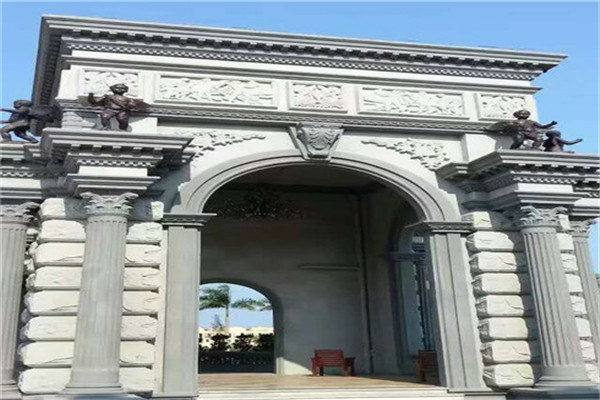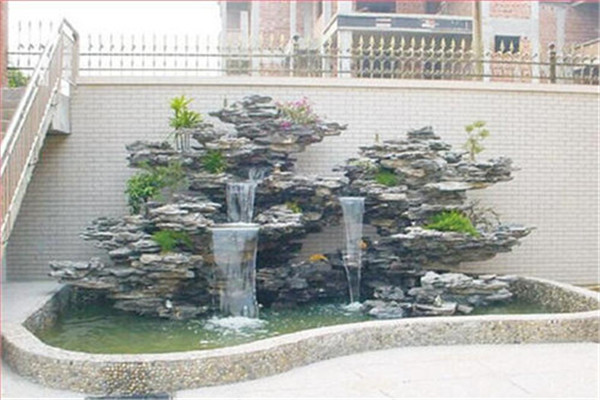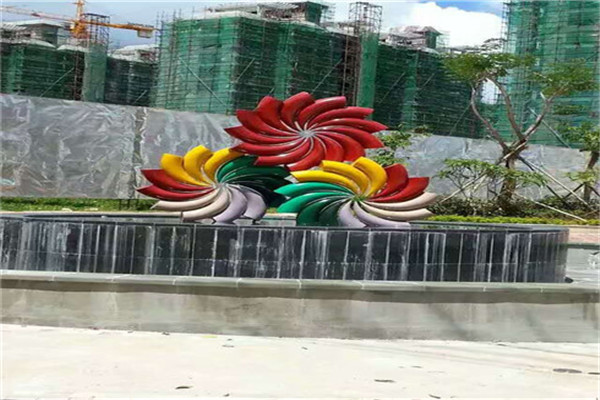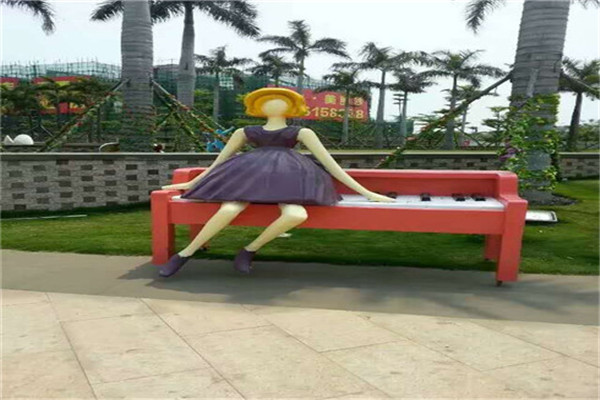
Artificial landscape rockery is a kind of mountain built with soil, stone and other materials for the purpose of landscaping in gardens. The rockery has various landscaping functions, such as forming the main landscape or terrain skeleton of the garden, dividing and organizing the garden space, arranging the courtyard, revetment, slope protection, retaining soil, and setting natural flower beds. It can also be combined with garden buildings, garden roads, sites and garden plants to form a scene full of changes, so as to reduce the artificial atmosphere, add natural interest, and integrate garden buildings into the landscape environment. Therefore, rockery has become one of the characteristics of Chinese natural landscape garden. The natural landscape is the artistic source and basis of rockery creation. Although the real mountain is good, it is rare to visit it often. The front rockery is arranged near the house. As a work of art, it is more general and refined than the real mountain. It can embody people's thoughts and feelings, and make it have the charm of "mountains are beautiful, rocks are beautiful". Artificial rockery must also try not to reveal artificial traces, making it difficult to distinguish the true from the false. The rockery, which comes down in one continuous line with the traditional Chinese landscape painting, is important because it seems true but not true. Although it is false, it is still true, which is thought-provoking.

Full name of GRC component: GRC building detail decoration component. Abbreviation of the specification: GRC building details. Because the name of GRC building detail decoration component is too long to remember, lines are often referred to as GRC components. Because of the prevalence of European customs in recent years, they are also often called GRC European components, GRC Roman columns, GRC eaves lines, GRC decorative lines, GRC corner lines, GRC door and window covers, GRC vase railings, etc. According to the national standard Code for Acceptance of Construction Quality of Building Decoration Engineering (GB50210-2001) issued by the Ministry of Construction, GRC building detail decoration component belongs to one of the building components in the detail project of building decoration engineering. The product is to mix the raw materials according to a certain proportion, and Hainan sculpture is poured into the mold, which can produce products with rich shapes and diverse textures. According to the different needs of customers and designers, we can carry out arbitrary art modeling to perfectly realize the designer's design dream.

Jade carving, commonly known as jade ware, has a long history. Jade pendants appeared in China during the Neolithic Period, and the jade carving skills of the Shang Dynasty were relatively mature. There are dozens of jade carving materials, such as white jade, jasper, sapphire, black jade, jadeite, crystal, agate, topaz, single jade, Xiuyu, etc. Because the jade itself is fine, hard and warm, or white as cream, or green and green, bright and lovely color, suitable for making valuable decorations. As for the production of jade, most people think it is carved with a carving knife, but it is not. The jade is hard, and the carving knife cannot cut it into it. Instead, it is polished by various shapes of drill bits, emery and water, depending on the shape of the work. Therefore, it takes a long time to complete a jade carving.

Among Chinese stone animal carvings, stone lion carvings have a unique style and can be produced in countless quantities. They are widely used for decoration, such as the stone lion carvings on both sides of the gates of imperial palaces, houses, government offices, temple shaped tombs, modern large-scale commercial buildings, hotels and restaurants, and the stone lion decorative carvings on bridges, monuments and workshops. The body shape of stone lions varies in various ways, such as standing, squatting, lying, and so on, with various shapes and often regional differences. The stone lions are carved from a wide range of materials, mostly sandstone, marble and granite. There are many kinds of stone carvings, such as cliff paintings, natural colored stone paintings, inlaid stone murals and stone screen carvings; Stone carvings of famous inkstones such as Duanxiyu, Lu, Taohe, Songhua, Temple of Heaven (or Pangu) and Helan; Paperweights, stationery stone carvings; Tea sets, wine sets, smoke stone sets, lamps and lanterns, table, chair, stool, tea table and other daily necessities, such as craft stone carvings, which are large in number and well made; Inkstone carvings and other unique styles have become a wonderful flower of Chinese stone culture: inlaid stone murals are a new masterpiece of contemporary stone carving art. The colorful stone landscape carvings in the hall on the first floor of the Central Television Tower, completed by Nu Skin, are magnificent and amazing.

Most of the jades mentioned in daily life refer to nephrite, and there are many kinds of nephrite products. Generally, they refer to white sheepskin jade, white jade, topaz, purple jade, black jade, jasper, sapphire, ruby and northeast Xiuyu produced in Xinjiang. cost performance GRC decorative materials In the jade carving, the white jade with sheepskin is fine in texture and strong in luster, as white as sheepskin, which can be called "the king of nephrite" and "the crown of white jade". In addition, Nanyang jade, Lantian jade, Hotan jade, agate, crystal, coral, turquoise, lapis lazuli, etc., all belong to the category of nephrite. Later, due to the opening of the Silk Road, the jade produced in Hotan, Xinjiang, was unanimously recognized and began to play a leading role in the processing of royal, official and folk jade. GRC decorative materials manufactor Nephrite gradually evolved into a synonym for hotan jade.





